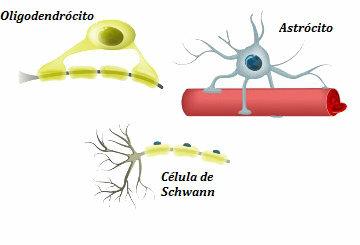The human body is made up of four basic types of tissue: o epithelial tissue, O connective tissue, O muscle tissue and nervous tissue. The latter is related to important functions of the organism, as it is responsible for transmitting stimuli to all parts of the body, thus controlling all functions.
Nervous tissue is capable of receiving information from the environment as well as from within the body. From this information, he is able to process a response that can, for example, move an organ, cause a gland to eliminate secretion or even trigger a thought.
Imagine that a person is walking through a large plantation of flowers that give off a delicious smell. This smell is only perceived thanks to our body's ability to receive stimuli from nerve cells.
Nervous tissue is formed by a large number of cells and little substance (extracellular matrix) between them. The main cells in this tissue are neurons, but there are other cell types, which are generally called glial cells or neuroglia.

Glia cells are important for the functioning of the nervous system
You neurons they are cells formed by a cell body, where organelles and the nucleus are found, and by extensions called dendrites and axon. Dendrites are small extensions when compared to the axon and present in greater quantity. They are responsible for carrying a nervous stimulus to the cell body. The axon, which is normally single per cell, is long and branched at the end. This extension conducts the nerve impulse from one neuron to another or from one neuron to another cell.
Glia cells, unlike neurons, are not a single type of cell, but rather a group of different cell types. These cells control the functioning of the nervous system, nourish neurons, help in the digestion of foreign particles and are part of the composition of sheaths that surround the neurons. Examples of glial cells are astrocytes, oligodendrocytes and Schwann cells.
The nervous tissue is responsible for the formation of the nervous system, which is made up of our brain, spinal cord, nerves and ganglia. Generally speaking, we can classify the nervous system into two types: scentral and peripheral nervous system. The central nervous system is made up of the brain and spinal cord, and the peripheral is made up of the nerves and ganglia.


